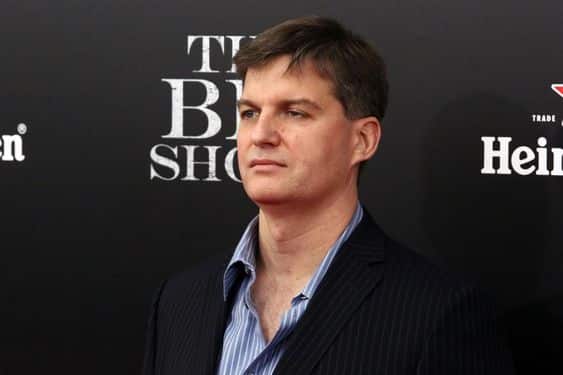In the intricate dance of the financial markets, where gold has long been perceived as a bastion against the erosive effects of inflation, a notable shift has emerged, challenging the traditional paradigms of safe-haven investments. Michael Burry, an investor with a storied history of prescient market predictions, has divested his entire stake in the Sprott Physical Gold Trust ($PHYS), a move that has sent ripples through the investment community. This strategic reallocation of assets comes at a time when gold has appreciated by 23% over the past six months, underscoring the metal’s enduring appeal during periods of economic uncertainty.
The Divestment from Gold Amidst Cryptocurrency Turbulence
The synchronization of Burry’s exit from gold with a pronounced downturn in the cryptocurrency market, particularly with bitcoin and ethereum experiencing significant retractions, poses a compelling narrative. This alignment may suggest a broader recalibration of risk preferences among investors, seeking shelter from the volatility that has characterized both traditional and digital asset classes in recent times. However, this tactical shift away from gold, despite its recent gains, hints at an underlying reevaluation of its role as a financial safeguard.
Inflation Dynamics and Interest Rate Expectations
Further light is shed on Burry’s strategic pivot by recent inflation trends and their implications for monetary policy. The latest US Consumer Price Index (CPI) report indicates a notable deceleration in inflation, with a modest 0.2% increase from the previous month and an annual rate dropping to a multi-year low. This slowdown in inflation, if sustained, could pave the way for a more accommodative monetary stance by the Federal Reserve, potentially leading to lower interest rates in the near future. Such a scenario may weaken the investment case for gold, traditionally sought after for its inflation-hedging properties.
Repositioning Towards Payment Processing and Real Estate
In lieu of gold, Burry has redirected his investments towards sectors that underscore a conviction in the resilience and growth potential of the broader economy. His increased stake in Shift4 Payments ($FOUR) reflects a belief in the robustness of consumer spending and the pivotal role of digital transactions in the contemporary economic landscape. This move aligns with a broader trend of embracing technology-driven solutions that streamline commerce and enhance operational efficiency across industries.
Simultaneously, Burry’s foray into the beleaguered realm of commercial real estate, through a significant investment in Hudson Pacific Properties ($HPP), underscores a contrarian approach to asset selection. This investment philosophy hinges on the identification of undervalued entities poised for a rebound, suggesting a nuanced understanding of market cycles and the latent potential within sectors most afflicted by prevailing economic headwinds.
Analysis and Forward-Looking Perspectives
Burry’s strategic reallocations embody a broader narrative of adaptation and strategic foresight in the face of evolving economic indicators and market sentiment. By divesting from gold and reallocating towards sectors with distinct growth narratives, such as digital payment processing and commercial real estate, the move signals confidence in the underlying strength of the consumer market, the resilience of the U.S. dollar, and the prospects for job market expansion.
This recalibration of investment priorities, amidst the backdrop of changing inflation dynamics and monetary policy expectations, provides a case study in navigating the complexities of the financial landscape. As markets continue to evolve, the strategies adopted by seasoned investors like Burry offer valuable insights into the interplay of economic fundamentals, investor sentiment, and the relentless quest for value in an ever-changing world.
In summary, while gold’s luster as an investment hedge may fluctuate with economic cycles and policy shifts, the enduring wisdom lies in the ability to anticipate these changes and adapt accordingly. The recent moves by noted investors underscore a broader thematic of seeking growth and value beyond traditional safe havens, reflecting a dynamic approach to asset allocation in response to a fluid economic environment.
